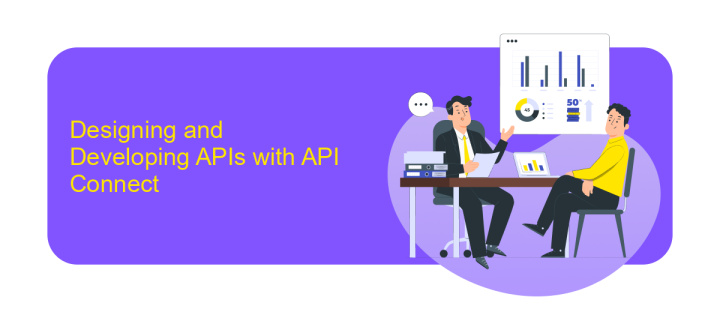API Connect API Integration
In today's rapidly evolving digital landscape, seamless integration between applications and services is crucial for business success. API Connect serves as a powerful tool for API integration, enabling organizations to streamline operations, enhance connectivity, and drive innovation. By leveraging API Connect, businesses can efficiently manage, secure, and scale their APIs, fostering a more agile and responsive IT environment that meets the demands of modern enterprises.
Introduction to API Connect and API Integration
API Connect is a comprehensive solution that enables businesses to create, manage, and secure APIs with ease. It acts as a bridge between different applications, allowing them to communicate seamlessly. This is crucial in today's digital landscape, where the integration of various software systems is essential for efficiency and innovation.
- API Management: Streamlines the process of creating and publishing APIs, ensuring they are easily accessible and secure.
- Security: Provides robust security features to protect data and ensure compliance with industry standards.
- Analytics: Offers insights into API usage, helping businesses optimize their API strategies.
API Integration, on the other hand, focuses on connecting disparate systems and applications through APIs. This integration is vital for businesses seeking to enhance their operational capabilities and customer experiences. By leveraging API Connect and API Integration, organizations can achieve greater agility, reduce costs, and accelerate their digital transformation efforts.
Designing and Developing APIs with API Connect

Designing APIs with API Connect involves a structured approach that ensures both functionality and scalability. Initially, you need to define the purpose of your API, identifying the specific needs it will address. This involves understanding the target audience and their requirements. Once the objectives are clear, you can start outlining the API endpoints, considering RESTful principles to ensure a standardized approach. It's crucial to focus on security and data privacy, incorporating authentication and authorization mechanisms such as OAuth 2.0. Additionally, using tools like ApiX-Drive can streamline integration processes, allowing seamless connectivity between various services and applications.
Developing APIs with API Connect requires a robust development environment. Start by setting up a development workspace that supports collaborative coding and version control. API Connect offers a comprehensive toolkit that aids in testing and debugging, ensuring that your API performs optimally under different conditions. Emphasize the importance of documentation, as it facilitates easier adoption and integration by third-party developers. By leveraging features such as automated testing and continuous deployment, you can ensure that your API remains reliable and up-to-date. ApiX-Drive can be an invaluable resource here, simplifying the integration of new functionalities and services as your API evolves.
Securing and Managing APIs

In today's digital landscape, securing and managing APIs is crucial for protecting sensitive data and ensuring seamless integration. Effective API security involves implementing robust authentication and authorization mechanisms, encrypting data transmissions, and continuously monitoring for vulnerabilities. By securing APIs, organizations can prevent unauthorized access and safeguard their digital assets.
- Implement strong authentication and authorization protocols to ensure only legitimate users can access your APIs.
- Encrypt data in transit using protocols such as TLS to protect against interception and eavesdropping.
- Regularly update and patch API components to address security vulnerabilities and enhance protection.
- Use API gateways to manage traffic, enforce security policies, and monitor usage patterns.
- Conduct periodic security audits and penetration testing to identify and mitigate potential threats.
Managing APIs effectively requires a comprehensive approach that includes monitoring, analytics, and lifecycle management. By utilizing API management tools, organizations can gain insights into API performance, track usage metrics, and optimize resources. This proactive management not only enhances security but also ensures APIs deliver consistent and reliable performance, supporting business objectives and improving user experience.
Deploying and Publishing APIs

Deploying and publishing APIs is a crucial step in making your services available to consumers. It involves transferring your API from a development environment to a production environment, ensuring that it is accessible and functional for end-users. This process requires careful planning and execution to avoid disruptions and maintain the integrity of your services.
Once your API is ready for deployment, it is essential to configure the necessary infrastructure, including servers, databases, and network settings. This ensures that your API can handle the expected load and provides a seamless experience for users. Additionally, security measures must be implemented to protect your API from unauthorized access and potential threats.
- Set up a reliable hosting environment for your API.
- Configure API gateways to manage traffic and enforce policies.
- Implement authentication and authorization mechanisms.
- Monitor API performance and usage with analytics tools.
After deploying your API, the next step is publishing it to a developer portal or marketplace. This allows developers to discover, access, and integrate your API into their applications. Providing comprehensive documentation and support resources is essential for fostering a positive developer experience and encouraging adoption.


Monitoring, Analyzing, and Optimizing API Performance
Monitoring API performance is crucial for ensuring seamless integration and optimal functionality. By continuously tracking key metrics such as response time, error rates, and throughput, developers can identify potential bottlenecks and inefficiencies. Utilizing tools like ApiX-Drive, which offers real-time monitoring capabilities, allows for proactive management of API integrations. This service provides detailed analytics and alerts, enabling teams to quickly address issues and maintain high performance standards.
Analyzing collected data is the next step in refining API performance. By examining trends and patterns, developers can pinpoint areas for improvement and implement strategic optimizations. ApiX-Drive facilitates this process by offering comprehensive reporting features that highlight critical insights. With this information, teams can make informed decisions to enhance API efficiency, such as optimizing code, balancing load distribution, or refining request handling. Ultimately, these efforts lead to a more robust and reliable API ecosystem, ensuring seamless user experiences and maximizing operational effectiveness.
FAQ
What is API integration?
How does API integration benefit businesses?
What are some common challenges in API integration?
How can businesses simplify the API integration process?
What should be considered when choosing an API integration tool?
Time is the most valuable resource for business today. Almost half of it is wasted on routine tasks. Your employees are constantly forced to perform monotonous tasks that are difficult to classify as important and specialized. You can leave everything as it is by hiring additional employees, or you can automate most of the business processes using the ApiX-Drive online connector to get rid of unnecessary time and money expenses once and for all. The choice is yours!

